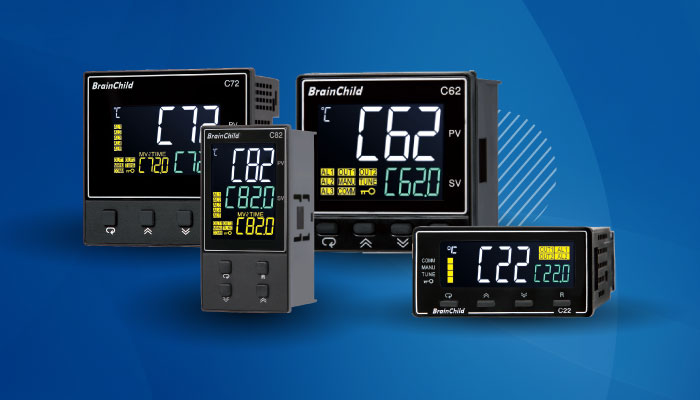Integrating PID Controllers with SCADA Systems

In the modern industrial landscape, automation and control systems play a pivotal role in enhancing efficiency, reliability, and safety. Among the various components that contribute to these systems, PID (Proportional-Integral-Derivative) controllers and SCADA (Supervisory Control and Data Acquisition) systems are two critical elements. Integrating PID controllers with SCADA systems can provide a powerful combination for real-time monitoring, control, and optimization of industrial processes. This blog explores the benefits and best practices for integrating PID controllers with SCADA systems.
Understanding PID Controllers and SCADA Systems
PID Controllers: PID controllers are fundamental components in industrial control systems used to maintain a desired output within a process. They operate by continuously calculating an error value as the difference between a desired setpoint and a measured process variable.
SCADA Systems: SCADA systems are used for real-time monitoring and control of industrial processes. They collect data from various sensors and devices, providing a centralized platform for operators to monitor and control equipment. SCADA systems consist of:
- HMI (Human-Machine Interface): Allows operators to interact with the system.
- RTUs (Remote Terminal Units) and PLCs (Programmable Logic Controllers): Collect data from sensors and control actuators.
- Communication Infrastructure: Connects RTUs/PLCs to the SCADA central system.
- Data Processing and Storage: Analyzes and stores data for real-time and historical analysis.
Benefits of Integrating PID Controllers with SCADA Systems
- Enhanced Monitoring and Control:
Integrating PID controllers with SCADA systems allows for centralized monitoring and control of multiple processes. Operators can view real-time data, adjust setpoints, and fine-tune PID parameters from a single interface. This integration enhances operational efficiency and reduces the need for manual interventions.
- Improved Process Optimization:
SCADA systems provide comprehensive data analytics and reporting capabilities. By integrating PID controllers, operators can analyze historical data to identify trends, optimize control strategies, and improve process performance. This data-driven approach enables continuous improvement and higher process efficiency.
- Increased Reliability and Safety:
Real-time monitoring of process variables and controller outputs helps in early detection of anomalies or deviations from desired performance. SCADA systems can trigger alarms and safety protocols in case of critical conditions, ensuring the reliability and safety of industrial operations.
- Reduced Downtime and Maintenance Costs:
Predictive maintenance becomes more effective with integrated PID and SCADA systems. By continuously monitoring the performance of controllers and equipment, potential issues can be identified and addressed before they lead to failures, reducing downtime and maintenance costs.
Best Practices for Integration
- Standardized Communication Protocols:
Use standardized communication protocols such as Modbus, OPC (OLE for Process Control), or Ethernet/IP to ensure seamless communication between PID controllers and SCADA systems. Standard protocols facilitate interoperability and reduce integration complexity.
- Comprehensive Testing:
Before deploying the integrated system, conduct comprehensive testing to ensure all components work seamlessly together. Simulate various operating conditions and scenarios to identify and address any potential issues.
- Scalability and Flexibility:
Design the integrated system with scalability and flexibility in mind. Ensure that the system can accommodate future expansions and upgrades without requiring significant changes to the existing infrastructure.
- Robust Cybersecurity Measures:
Implement robust cybersecurity measures to protect the integrated system from cyber threats. This includes using secure communication protocols, regularly updating software and firmware, and conducting periodic security audits.
- Operator Training:
Provide comprehensive training to operators on how to use the integrated system effectively. Ensure they understand how to monitor and adjust PID parameters through the SCADA interface, interpret data analytics, and respond to alarms and alerts.
Conclusion
Integrating PID controllers with SCADA systems offers numerous benefits, including enhanced monitoring and control, improved process optimization, increased reliability and safety, and reduced downtime and maintenance costs. By following best practices such as using standardized communication protocols, conducting comprehensive testing, and implementing robust cybersecurity measures, manufacturers can achieve a seamless and effective integration.
For businesses looking to enhance their automation processes, Theta Controls offers advanced solutions for integrating PID controllers with SCADA systems. Our expertise ensures reliable, efficient, and secure automation solutions tailored to your specific needs.
Contact Theta Controls today to learn more about our integration services and Process Control Instruments like paperless chart recorders, panel PCs, DC motor controllers multifunctional timers, etc, Optimize your automation with Theta Controls—your trusted partner in advanced industrial solutions!


